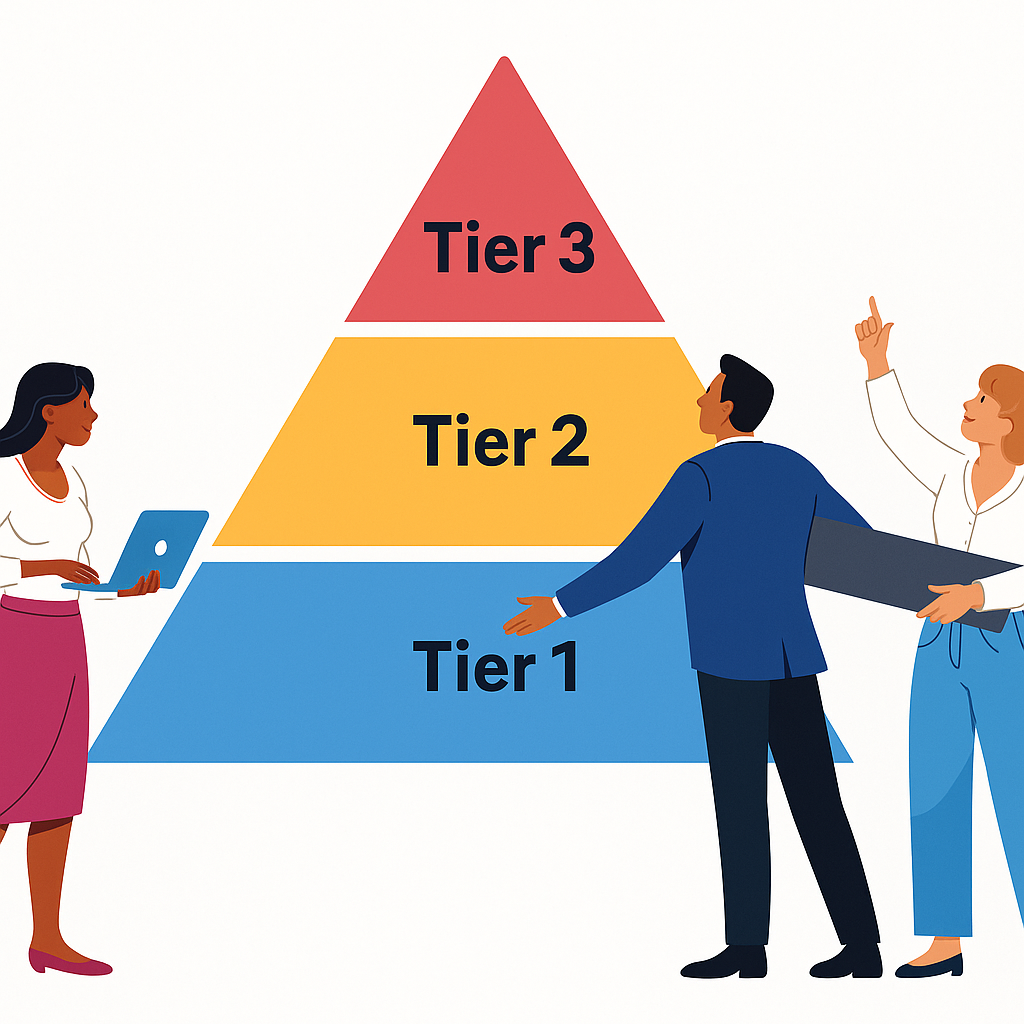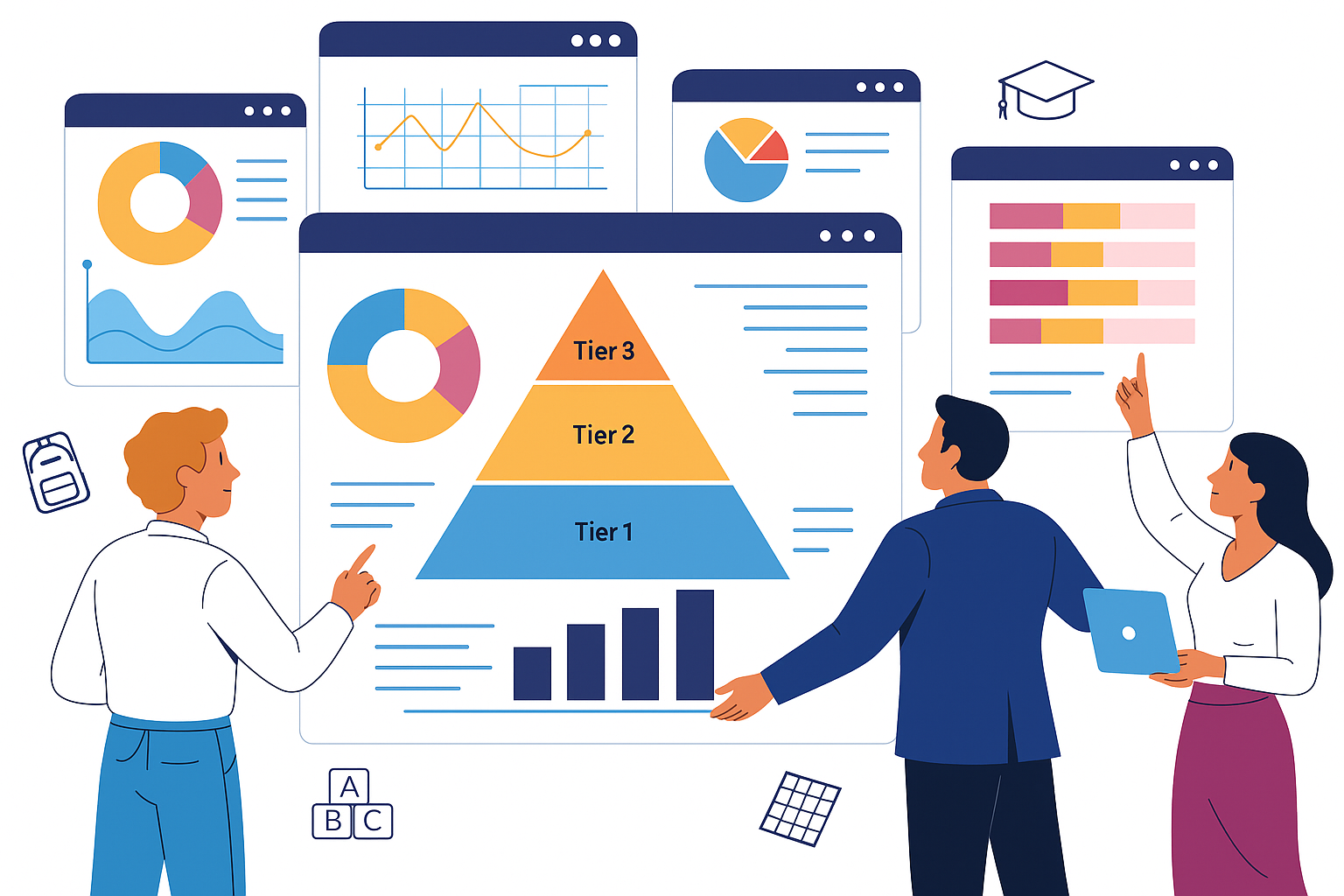Strengthening MTSS: How Whole Child Analytics Supports Every Tier

When districts talk about Multi-Tiered Systems of Support (MTSS), the conversation often focuses on interventions. But what makes interventions effective isn’t just the strategies—it’s the data that powers them. Whole Child Analytics provides a complete view of academic, behavioral, and social-emotional factors, ensuring that decisions are informed, timely, and actionable across every MTSS tier.
In this blog, we’ll look at how Whole Child Analytics strengthens MTSS from Tier 1 universal supports to Tier 3 intensive interventions.
Tier 1: Universal Supports for All Students
Tier 1 is about ensuring that all students have access to high-quality instruction, positive school climates, and supportive environments.
Where Whole Child Analytics helps:
- Early warning indicators: Attendance, behavior, and SEL metrics highlight trends before they escalate.
- Instructional equity: Dashboards reveal if certain subgroups are not benefiting equally from Tier 1 supports.
- Teacher visibility: Role-based dashboards let educators track classroom-level patterns without waiting for reports.
Example: A school notices chronic absenteeism rising in 6th grade. Whole Child Analytics surfaces attendance and engagement patterns, allowing the school to deploy a Tier 1-wide strategy—like family outreach or attendance incentives—before the issue deepens.
Tier 2: Targeted Small-Group Interventions
Tier 2 focuses on students who need additional support beyond universal strategies.
Where Whole Child Analytics helps:
- Student grouping: Data automatically clusters students with similar needs (e.g., reading gaps, SEL concerns, or behavioral patterns).
- Progress monitoring: Dashboards track whether interventions are working in real time, not months later.
- Cross-role collaboration: Counselors, teachers, and coordinators can see the same intervention data, reducing silos.
Example: A group of students flagged for math gaps is placed in a supplemental program. Whole Child Analytics shows which students are improving, which need different supports, and whether Tier 2 interventions are closing gaps or if a Tier 3 referral is necessary.
Tier 3: Intensive Individualized Support
Tier 3 requires highly individualized interventions and wraparound services. These students are often at the highest risk of disengagement, failure, or dropout.
Where Whole Child Analytics helps:
- Individual student profiles: A 360° view combines academics, behavior, SEL, health, and external factors.
- Intervention history: Educators can see what has already been tried—and whether it worked.
- Community integration: Data can connect schools with community-based supports like counseling or healthcare services.
Example: A student with chronic absenteeism and declining grades is identified at Tier 3. Analytics show the underlying issue is not academic ability but transportation and housing instability. With this insight, the district partners with community resources, ensuring the intervention addresses the root cause.
Why Whole Child Analytics Is Essential for MTSS
MTSS isn’t just a framework—it’s a commitment to ensuring every student gets the support they need. Without the right data:
- Schools don’t know when they’ve spent too much or not enough time with a particular intervention.
- Tier 1 issues go unnoticed until they become Tier 2 or Tier 3.
- Students may be placed in the wrong tier, delaying effective support.
- Leaders struggle to measure ROI and communicate progress.
Whole Child Analytics empowers districts to:
- Align MTSS interventions with real-time data.
- Ensure equitable support across all subgroups.
- Communicate clearly with stakeholders—from principals to school boards—about what’s working and why.
- Align spending to supports that are working for students.
Next Step: Want to see how your district can strengthen MTSS with Whole Child Analytics? Register to attend our webinar this week, Building a Data-Driven Culture: Lessons from District Leaders, to hear from district leaders how Whole Child Analytics is supporting their MTSS framework.
%20good%20version.png)


